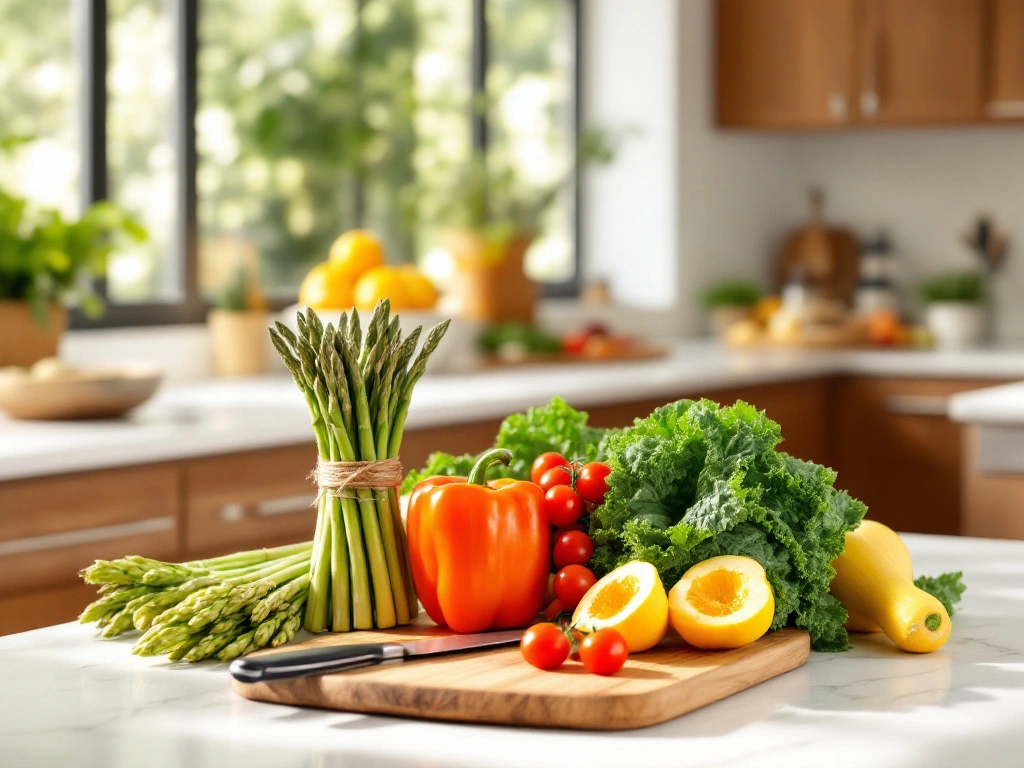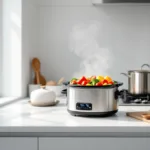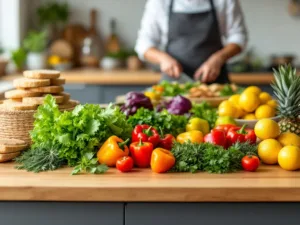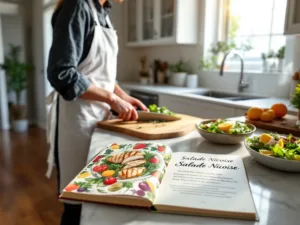Baking: Innovative Methods for Healthy and Delicious Meals
Introduction
Baking has long been a beloved culinary art, transforming simple ingredients like flour, sugar, and eggs into mouthwatering creations. From flaky croissants to decadent chocolate cakes, baking has the power to evoke comfort, celebration, and creativity. However, as health-conscious lifestyles gain traction, many are seeking ways to enjoy baked goods without compromising their nutritional goals. This article explores innovative methods for baking healthier, delicious meals without sacrificing flavor or texture. Whether you’re a seasoned baker or a novice, these tips and techniques will inspire you to reimagine your approach to baking, making it a healthier and more sustainable part of your culinary repertoire.
The Evolution of Baking: From Tradition to Innovation
Baking has a rich history, dating back to ancient civilizations that used rudimentary ovens to create bread and pastries. Over time, baking techniques have evolved, incorporating new ingredients, tools, and technologies. Today, baking is not just about tradition; it’s about innovation. With the rise of dietary preferences like gluten-free, vegan, and low-carb, bakers are experimenting with alternative ingredients and methods to cater to diverse needs.
For example, almond flour and coconut flour have become popular substitutes for traditional wheat flour, offering lower carbohydrate content and higher protein. Similarly, plant-based milks and egg replacements have made vegan baking more accessible. These innovations are not just about catering to dietary restrictions—they’re about expanding the possibilities of baking itself.
The Science of Healthy Baking
Understanding the science behind baking is crucial for creating healthier alternatives. Traditional baking relies on precise ratios of fat, sugar, and flour to achieve the desired texture and flavor. When substituting ingredients, it’s important to consider their chemical properties and how they interact.
For instance, applesauce or mashed bananas can replace butter or oil in certain recipes, reducing fat content while adding natural sweetness. However, these substitutions may alter the texture, making the final product denser. Similarly, using honey or maple syrup instead of refined sugar can add nutrients, but their liquid form may require adjustments to the recipe’s dry-to-wet ratio.
By understanding these principles, you can make informed decisions about ingredient substitutions and achieve healthier results without compromising quality.
Innovative Ingredients for Healthier Baking
1. Alternative Flours
Traditional white flour is highly refined and lacks essential nutrients. Fortunately, there are numerous healthier alternatives:
- Almond Flour: Rich in protein and healthy fats, almond flour is ideal for gluten-free baking. It adds a nutty flavor and moist texture to cakes and cookies.
- Coconut Flour: High in fiber and low in carbohydrates, coconut flour absorbs more liquid than other flours, so it’s best used in combination with other ingredients.
- Oat Flour: Made from ground oats, this flour is high in fiber and adds a hearty texture to baked goods.
2. Natural Sweeteners
Refined sugar is a major contributor to empty calories in baked goods. Consider these natural alternatives:
- Honey: Adds sweetness and moisture, but use sparingly as it’s calorie-dense.
- Maple Syrup: Contains antioxidants and minerals, making it a healthier choice for sweetening.
- Stevia: A zero-calorie sweetener derived from the stevia plant, ideal for those watching their sugar intake.
3. Healthy Fats
Replace butter and margarine with healthier fats like:
- Avocado: Mashed avocado can replace butter in recipes, adding creaminess and healthy monounsaturated fats.
- Greek Yogurt: Adds moisture and protein while reducing the need for fat.
4. Egg Replacements
For vegan baking or those with egg allergies, try:
- Flaxseed Meal: Mix 1 tablespoon of flaxseed meal with 3 tablespoons of water to replace one egg.
- Chia Seeds: Similar to flaxseed, chia seeds can be used as a binding agent.
- Applesauce: Adds moisture and works well in cakes and muffins.
Techniques for Healthier Baking
1. Portion Control
One of the simplest ways to make baking healthier is by reducing portion sizes. Instead of baking a large cake, consider making cupcakes or mini muffins. Smaller portions help control calorie intake while still satisfying your sweet tooth.
2. Incorporating Whole Grains
Replace refined grains with whole grains like whole wheat flour, quinoa flour, or spelt flour. These options are higher in fiber and nutrients, promoting better digestion and sustained energy levels.
3. Adding Fruits and Vegetables
Incorporating fruits and vegetables into baked goods is an excellent way to boost nutrition. For example:
- Zucchini: Adds moisture and nutrients to bread and muffins.
- Carrots: Perfect for carrot cake or muffins, providing natural sweetness and vitamins.
- Beets: Their vibrant color and earthy flavor make them a unique addition to chocolate cakes.
4. Reducing Sugar
You can often reduce the amount of sugar in a recipe by 25-50% without significantly affecting the taste. Enhance sweetness with spices like cinnamon, nutmeg, or vanilla extract.
5. Experimenting with Herbs and Spices
Herbs and spices not only add flavor but also offer health benefits. Turmeric, for example, has anti-inflammatory properties, while cinnamon can help regulate blood sugar levels.
Practical Tips for Healthier Baking
1. Read Labels Carefully
When purchasing ingredients, read labels to avoid hidden sugars, unhealthy fats, and artificial additives. Opt for organic and minimally processed options whenever possible.
2. Invest in Quality Tools
High-quality baking tools, such as silicone baking mats and non-stick pans, can reduce the need for excessive oil or butter.
3. Experiment and Adapt
Don’t be afraid to experiment with new ingredients and techniques. Baking is as much about creativity as it is about precision.
4. Practice Mindful Baking
Baking can be a therapeutic activity. Focus on the process, savor the aromas, and enjoy the satisfaction of creating something from scratch.
Examples of Healthy Baking Recipes
1. Gluten-Free Banana Bread
- Ingredients: Almond flour, ripe bananas, eggs (or flaxseed meal), honey, baking soda, and cinnamon.
- Method: Mash bananas, mix with wet ingredients, fold in dry ingredients, and bake at 350°F for 40-50 minutes.
2. Vegan Chocolate Avocado Brownies
- Ingredients: Avocado, cocoa powder, maple syrup, oat flour, and baking powder.
- Method: Blend avocado and wet ingredients, mix with dry ingredients, and bake at 375°F for 20-25 minutes.
3. Low-Sugar Apple Cinnamon Muffins
- Ingredients: Whole wheat flour, unsweetened applesauce, almond milk, stevia, and cinnamon.
- Method: Combine wet and dry ingredients, fill muffin tins, and bake at 375°F for 18-20 minutes.
Conclusion
Baking doesn’t have to be a guilty pleasure. With innovative ingredients and techniques, you can create healthy, delicious meals that nourish your body and delight your taste buds. By understanding the science of baking, experimenting with alternative ingredients, and adopting mindful practices, you can transform your favorite recipes into healthier versions without compromising on flavor or texture.
As you embark on your healthier baking journey, remember that small changes can make a big difference. Start by substituting one ingredient or reducing sugar in a recipe, and gradually incorporate more innovative methods. Baking is an art, and like any art form, it thrives on creativity and experimentation. So, roll up your sleeves, preheat your oven, and discover the joy of baking healthier, more delicious meals.
Whether you’re baking for yourself, your family, or a special occasion, these innovative methods will help you create treats that are as good for your body as they are for your soul. Happy baking!









Add comment